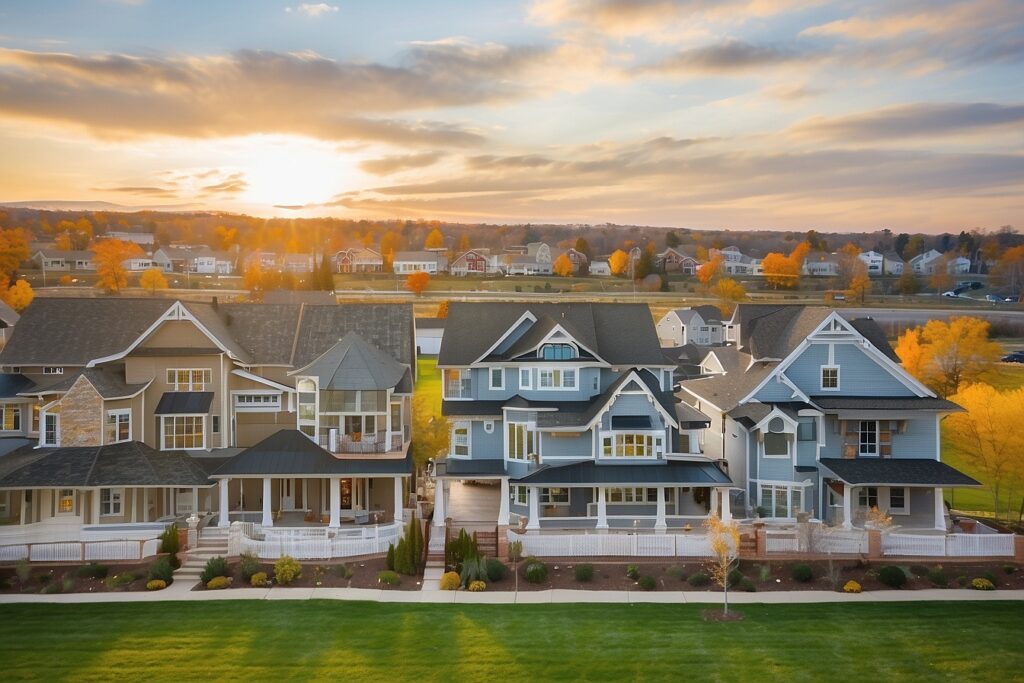
Home Flipping Transactions Decline in 2023, But Profits See an Upturn
In the second quarter of 2023, the U.S. witnessed a downturn in home flipping transactions, as reported by ATTOM Data. Approximately 84,350 single-family homes and condominiums were flipped during this period, accounting for 8 percent of all home sales in the country between April and June 2023, a slight drop from the previous quarter.
This decline marked a departure from the first quarter of 2023, where flipping activity accounted for 9.9 percent of all home sales, and also showed a decrease compared to the same period in the previous year, when flipping represented 8.9 percent of transactions. While the flipping rate remained relatively high historically, it approached one of its lowest points since 2021.
Despite the decrease in flipping activity, investor profits and profit margins displayed signs of recovery from a two-year slump. Both measures saw an increase for the second consecutive quarter, with investment returns experiencing the most significant surge since 2020, and raw profits witnessing a substantial spike, the most significant in a decade.
Although profit margins are still below the peaks of 2021, they rose by almost five percentage points from the first to the second quarter of 2023. Meanwhile, raw profits from typical flips surged by 18 percent quarterly.
The revival in home flipping profits occurred alongside a rebound in the broader U.S. housing market, with median home prices for single-family homes rising by 10 percent during the spring buying season after experiencing a decline from mid-2022 to early 2023.
ATTOM CEO Rob Barber commented on the situation, stating, “Fortunes for investors who flip homes for quick profits are showing more signs of turning around after a long and unusual period when they went down while the rest of the market went up.”
Among the flipped properties nationwide, the gross profit on typical transactions increased to $66,500 in the second quarter of 2023, representing a recovery from the previous year. However, it remained lower than the levels seen in the second quarter of 2022.
The typical gross flipping profit translated into a 27.5 percent return on investment compared to the original acquisition price in the second quarter of 2023. This marked an improvement from the first quarter of the year and a reversal of the downward trend seen in the past two years.
The turnaround in profits and profit margins can be attributed to shifts in property prices, with the resale price of flipped homes increasing in the second quarter, contrasting with the decrease in prices during the property acquisition phase.
The decline in flipping rates was observed in almost 90 percent of metropolitan statistical areas analyzed, with notable fluctuations across different regions. While some areas recorded high flipping rates, others experienced a minimal presence of home flipping activity.
Home Flipping Rates Experience Decline Across Most of the Nation
In the second quarter of 2023, home flipping rates saw a notable decrease in nearly 90 percent of the metropolitan statistical areas (MSAs) across the United States. Data from 190 MSAs with sufficient information for analysis revealed that flipping rates dropped in 168 areas, accounting for 88 percent of all regions considered.
Among these, more than a third experienced a decline of at least two percentage points in flipping activity compared to the first quarter of 2023.
The report included metro areas with populations of 200,000 or more and a minimum of 50 home flips in the second quarter of 2023. Notably, the largest flipping rates during this period were observed in cities such as Macon, GA, where flips comprised 16.8 percent of all home sales, followed by Columbus, GA (15.3 percent), Spartanburg, SC (13.5 percent), Atlanta, GA (13.5 percent), and Akron, OH (12.5 percent).
Among metro areas with populations exceeding one million, Atlanta, GA, continued to exhibit high flipping rates, joined by cities like Memphis, TN (12.5 percent), Jacksonville, FL (11.1 percent), Cincinnati, OH (11 percent), and Phoenix, AZ (10.9 percent).
Conversely, some metro areas reported relatively low levels of home flipping activity. Cities with the smallest flipping rates in the second quarter of 2023 included Seattle, WA (3.7 percent), Santa Rosa, CA (4 percent), San Jose, CA (4.2 percent), San Francisco, CA (4.3 percent), and Hilo, HI (4.3 percent).
These findings underscore the diverse landscape of home flipping trends across different regions, reflecting variations in market conditions, investor preferences, and economic factors influencing real estate investment strategies.
Typical Home Flipping Returns See Quarterly Increase in Majority of Regions
In the second quarter of 2023, typical returns from home flipping witnessed a rise in two-thirds of the nation, according to the latest data. The median resale price of flipped homes across the country stood at $308,500 during this period, yielding a gross profit of $66,500 above the median purchase price of $242,000 for investors. As a result, the typical profit margin for home flips reached 27.5 percent in the second quarter of 2023, showing an improvement from the previous quarter.
However, while the increase is notable, it remains significantly lower than the profit margins observed in the same period of previous years. In the second quarter of 2022, for instance, the profit margin was recorded at 44.6 percent, dropping further from the 60.8 percent level seen in the corresponding period of 2021.
Among the 190 metro areas analyzed, profit margins experienced an uptick in 119 regions, accounting for 63 percent of the markets reviewed. Nevertheless, typical returns were still below those observed a year earlier in 86 percent of the analyzed markets.
Notable increases in profit margins during the second quarter of 2023 were observed in cities like Trenton, NJ (ROI surged from 11.3 percent to 85 percent), Akron, OH (increased from 50 percent to 116.7 percent), Montgomery, AL (rose from 30.8 percent to 78.8 percent), Champaign, IL (climbed from 10.5 percent to 53.9 percent), and Hagerstown, MD (elevated from 45.6 percent to 86.6 percent).
Despite these quarterly gains, typical flipping profits remained below 30 percent in 79 metro areas analyzed, a stark contrast to the situation a year earlier when only one in five regions had returns at such low levels.
Leading the pack in terms of returns on investment for typical home flips in the second quarter of 2023 were Akron, OH (116.7 percent return), Pittsburgh, PA (112.9 percent), Scranton, PA (93.7 percent), Hagerstown, MD (86.6 percent), and Trenton, NJ (85 percent).
However, among metro areas with populations exceeding one million, some cities reported weaker returns on typical home flips in the second quarter of 2023. For instance, Austin, TX, experienced a loss of 3.3 percent, while Phoenix, AZ, saw a gain of only 4.9 percent. Similarly, Salt Lake City, UT (6 percent gain), Dallas, TX (6.7 percent gain), and San Antonio, TX (6.8 percent gain), also reported relatively modest returns compared to other regions.
Investors Reap Highest Raw Profits in South and Northeast Regions
In the second quarter of 2023, the regions of the South and Northeast continued to witness the highest raw profits on median-priced home flips, as per the latest data.
Out of the top 20 regions boasting the highest raw profits, 15 were situated in these areas. San Jose, CA, emerged at the forefront with a typical gross profit of $288,750, followed by San Francisco, CA, with $177,500, Vallejo, CA, with $170,000, San Diego, CA, with $166,500, and Boston, MA, with $165,000.
Conversely, the regions of the South and West dominated the lower spectrum of raw profits, with the 20 lowest figures recorded in these areas. Among the regions with the weakest numbers were Austin, TX, with a loss of $14,814, Reno, NV, with a loss of $6,625, Killeen, TX, with a profit of $2,476, Provo, UT, with a profit of $6,009, and Lubbock, TX, with a profit of $6,130.
All-Cash Investments in Home Flipping Decline
In the second quarter of 2023, a notable shift was observed in the financing methods employed by home flippers across the nation. Data reveals that 62.6 percent of homes flipped during this period were purchased by investors using cash, marking a decline from the 66 percent recorded in the first quarter of 2023. However, this figure remains relatively consistent with the 62.7 percent portion observed in the second quarter of 2022. Conversely, 37.4 percent of homes flipped in the second quarter of 2023 were acquired with financing, reflecting an increase from the 34 percent recorded in the preceding quarter. Interestingly, this figure remains nearly unchanged from the 37.3 percent reported a year earlier.
Rob Barber, CEO of ATTOM Data, commented on this trend, noting that the decline in all-cash flips coincided with a brief period characterized by a slight decrease in mortgage rates following a spike in the preceding year. With rates now on the rise once more, there is expected to be greater pressure on investors to utilize cash for financing their flipping endeavors. The trajectory of this trend is anticipated to become clearer in the third quarter of the year.
Analyzing metropolitan areas with a population of 1 million or more and sufficient data for analysis, several regions emerged with a high percentage of flips conducted with cash purchases during the second quarter of 2023. Detroit, MI, led the pack with 82.9 percent, followed by Buffalo, NY, with 76.9 percent, Cleveland, OH, with 74.4 percent, Cincinnati, OH, with 73.8 percent, and Indianapolis, IN, with 73.2 percent.
Average Time to Flip Homes Reaches Three-Year High
In the second quarter of 2023, the average duration from purchase to resale for home flips across the United States climbed to 178 days. This figure represents a slight increase from the 177 days recorded in the first quarter of 2023 and a more significant rise from the 167 days observed in the second quarter of 2022.
Notably, this marks the longest duration recorded since mid-2020.
Upsurge in Investor Resales to FHA Buyers
Of the 84,350 homes flipped in the U.S. during the second quarter of 2023, 11.9 percent were sold to buyers utilizing loans backed by the Federal Housing Administration (FHA). This marks the fourth consecutive quarterly increase in this metric.
Comparatively, the preceding quarter saw 10.8 percent of flips sold to FHA-backed buyers, while the figure stood at 7.6 percent a year earlier, representing the highest proportion recorded since the third quarter of 2020.
Analysis of metropolitan areas with a population of at least 200,000 and a minimum of 50 home flips in the second quarter of 2023 reveals notable trends. Specifically, regions with the highest percentage of flipped properties sold to FHA buyers, who are typically first-time home purchasers, include Yuma, AZ (29.1 percent); Lakeland, FL (27.5 percent); Springfield, MA (23.4 percent); Modesto, CA (22.5 percent), and Scranton, PA (22.1 percent).
Quarter of U.S. Counties Witness Home-Flipping Rates Exceeding 10%
In the second quarter of 2023, home flipping constituted over 10 percent of all home sales in 245 out of the 1,025 counties across the United States with a minimum of 10 flips. This percentage accounts for approximately 24 percent of all counties with sufficient data to evaluate. However, this figure represents a notable decline from the 36 percent recorded in the first quarter of 2023.
Leading the pack in the second quarter of this year were Cobb County (Marietta), GA, with a home-flipping rate of 22.6 percent, followed closely by Rockdale County, GA (outside Atlanta), with 20.9 percent. Other prominent counties with substantial flipping rates included Dorchester County (Cambridge), MD (18.8 percent); Houston County (Warner Robins), GA (18.8 percent), and Paulding County, GA (outside Marietta), boasting an 18.5 percent flipping rate.




Thanks for sharing. I read many of your blog posts, cool, your blog is very good.